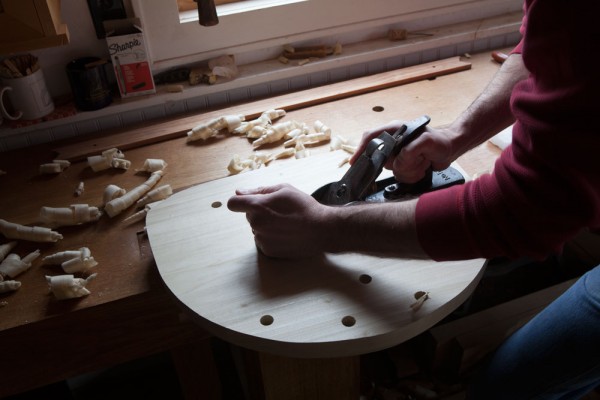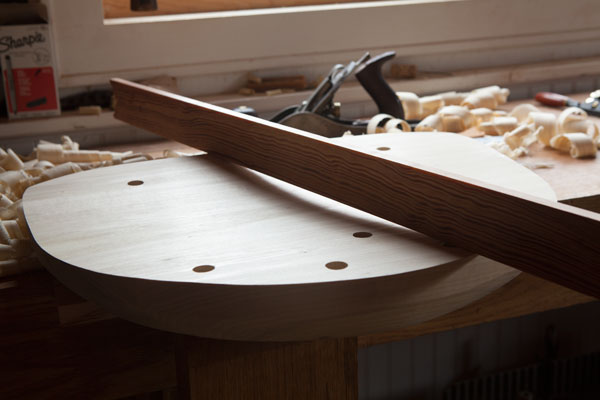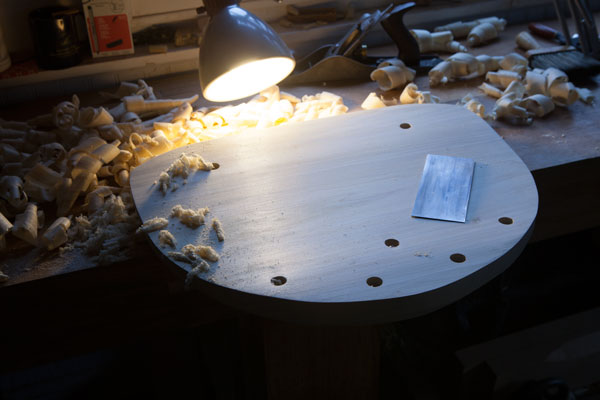We may receive a commission when you use our affiliate links. However, this does not impact our recommendations.
One of the barriers to making a Windsor chair are all the specialty tools, including the adze, scorp and travisher to scoop out the seat.
Though I own all these tools and have used them for more than a decade, I sometimes wonder if they are all necessary. How would you make a comfortable and sturdy chair if you didn’t own specialty tools?
This week I’m building a primitive three-legged stick Windsor chair and making it with as few specialty tools as possible. During the design phase I wondered I could scoop out the seat – called saddling – to make the chair comfortable without an adze, scorp or travisher.
After studying some old chairs, here’s what I did.
First I oriented the grain of the seat so it ran from side-to-side instead of front-to-back. My seat might not be as strong in theory, but lots of old chairs like this have survived just fine.
To scoop out the seat I used a jack plane with an iron that has a curved cutting edge. The curve is a segment of an arc with an 8” radius. With the iron set for a rank cut (.02”-thick shavings), I began hogging out the area where the saddle should be deepest. When the plane stopped cutting, I shifted it to the left until it was able to take a cut again. Then I shifted it to the right and did the same thing.
Then I returned to the middle and planed this area again. I repeated this process, fanning out left and right and creating a gradual valley. After 25 minutes of work, I had created a saddle that was about 7/16” deep and rose gradually to the front and back of the chair.
While this isn’t the shape of a saddle you’ll see on a high-style Windsor chair, you do see this kind of saddle on vernacular chairs. And it does make the seat more comfortable.
After refining the shape as much as possible with a jack, I switched to a card scraper and smoothed out the furrows created by the jack’s curved iron.
To be honest, I was surprised how easy and effective this method was. So if you can’t afford a nice adze, scorp or travisher, give this technique a try.
— Christopher Schwarz
Here are some supplies and tools we find essential in our everyday work around the shop. We may receive a commission from sales referred by our links; however, we have carefully selected these products for their usefulness and quality.












Very interesting!
It surprises me a tad that you didn’t use a shorter plane, which would lend itself to making a deeper cut (and ‘steeper’ curve, or both, yes?). I suppose you were just using the most common plane; the one people are most likely to own.
Always amazing how much a skilled user can do with a limited number of tools.
I am not sure if you have seen Paul Sellers Master Class video series for the shop stool but he caves his molded stool seat with a single gouge, a hatchet, and a simple home made plane with a curved bottom (covered in another video).
It’s a very different style of seat but amazing to watch a master at work.
Thank you Chris!
It NEVER ceases to amaze me the things you come up with by simply looking to those who came before us and deciphering how they achieved what they did with what [U] seems [U] to be less than what we have available to us now!